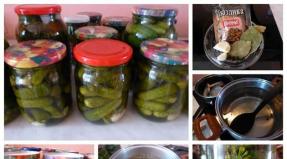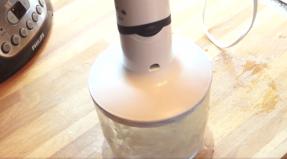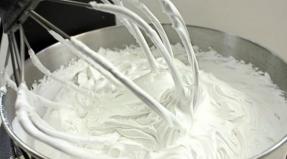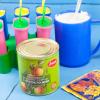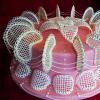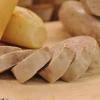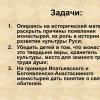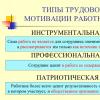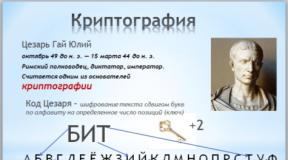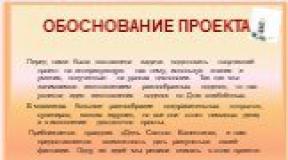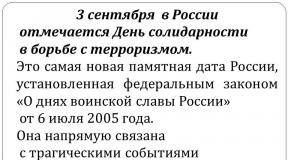One antifungal tablet. Antifungal drugs in broad-spectrum tablets. Differences and features of antifungal medicines
Fungus of nails and feet is a problem faced by many. Discomfort, itching, smell, inability to appear barefoot in public places like a bath or a swimming pool - all this causes significant inconvenience. Are there antifungal drugs - inexpensive but effective, with which you can defeat the fungus without overpaying in vain?
The fungus of the feet and nails is called mycosis in the language of doctors (the term "onychomycosis" is used for nails).
The disease can be caused by:
- dermatophyte fungi;
- fungi of the genus Candida;
- microsporia (eg ringworm);
- mold fungi.
Getting rid of onychomycosis is a lengthy process, ranging from three months to a year. This is due to the fact that the fungus remains in the layers of the nail and its complete renewal is required. The situation with mycosis of the feet is more "favorable", since the layers of the skin are more susceptible to the penetration of drugs.
Antifungal drugs for nails and feet are presented by a wide assortment in pharmacies, and it is not easy to choose among them inexpensive, but high-quality.
Creams, ointments and gels for feet and nails
First of all, creams, ointments and gels are used as external preparations for mycosis.

The modern classification of external antifungal agents is presented:
1. Polyenes: amphotericin B, natamycin, nystatin;
2. Azoles (imidazoles):
- bifonazole (drugs "Bifonazole", "Mikospor", "Bifosin" and others);
- clotrimazole ("Clotrimazole", "Kanesten", "Kanizon");
- isoconazole (Travogen);
- sertaconazole (Zalain);
- ketoconazole (Ketoconazole, Nizoral, Dermazole);
- miconazole (Mikozolon);
- oxyconazole (Mifungar).
3. Alkylamines:
- terbinafine (Terbinafine, Dermgel, Lamisil, Terbizil and others);
- naftifine ("Naftifine", "Exoderil").
4. Amorolfine ("Lotseril").
5. Among the group of drugs of various chemical structures for external use, agents with ciclopirox, Castellani paint, propylene glycol and others are used.
Antifungal ointments for feet (feet) are presented much wider than preparations for nail mycosis. Creams and ointments are applied, according to the instructions, on the skin of the feet and in the interdigital depressions 1-2 times a day. The course of treatment depends on the degree of fungus damage to the legs, on average it ranges from 2 weeks to several months.
Healing drops and sprays
Drops and sprays are a convenient form of drugs for fungal infections. Their advantage is ease of application and accuracy of dosage. After applying the solution, a protective film is formed on the skin (nails), which lasts for 2-3 days. The active substance under the film is absorbed into the dermis, well distributed in its layers.

The most famous and relatively affordable are:
- Lamisil-Uno (active ingredient - terbinafine);
- Lamitel (with terbinafine);
- Exoderil (with naftifine).
Antifungal varnishes

Fungicidal varnishes are used for the following indications:
- the duration of the disease does not exceed a year;
- the fungus has not affected the structure of the nail;
- no more than 1/3 of the nail plate is affected.
These funds are preferred when there are contraindications to oral treatment: liver or kidney disease, complications of the cardiovascular system.
Lacquer products are classified as economical, they are applied to nails not daily, but 1-3 times during the week. The frequency of applications depends on at what stage of the disease it is carried out, and on the basis of which active ingredient the varnish is made. The basis is amorolfine or ciclopirox.

Varnish on amorolfine ("Lotseril") is applied to the nail plate damaged by the fungus twice a week during the first month of treatment, then - once a week. Varnishes based on ciclopiroxolamine require more frequent application: 2-3 times a week throughout the entire treatment phase. On average, the duration of getting rid of the fungus using varnishes is from 4 months to six months.

Cyclopirox (Batrafen varnish) is an active substance of synthetic origin of many antifungal drugs. Highly effective against superficial mycoses, used in varnishes against nail fungus. However, the indicators of effectiveness against onychomycosis in varnishes with ciclopirox are lower than in amorolfine analogues.
Fungus varnishes are just a godsend for women who are faced with the problem of onychomycosis. You can apply the drug under a cosmetic varnish, thus completely masking the problem, and without giving up open shoes and sandals in the summer.
Inexpensive oral medications
Oral therapy is considered the most reliable and effective way treatment of mycoses of the feet and onychomycosis. The main criterion for choosing an oral antimycotic is the spectrum of its effects. What pills are prescribed?

Often, with similar active ingredients that are found in external products:
- Preparations with the active substance terbinafine. The tablets are taken at 250 milligrams per day (unless otherwise indicated) daily. It is necessary to do this as much as possible at the same time before eating. Reception continues from 2 to 4 months. It is allowed to give pills to children from 2 years old.
- Preparations with itraconazole are used according to the course of "pulse therapy": twice a day, 200 milligrams (it is important to maintain a twenty-hour interval), always after meals. To increase bioavailability, the drug is washed down with acidified water or apple juice. The treatment is continued for a week. After a break of 3 weeks, the seven-day cycle is repeated. Up to 5 such cycles are required.
- Fluconazole, like other drugs for candidiasis, is used mainly for isolated candidal onychomycosis. The 150 milligram remedy is taken once or twice a week for up to 2 months.
During pregnancy and during breastfeeding oral treatment of the fungus is prohibited!
Top 3 funds, according to the editorial staff of the site
The cheapest and most effective remedies for mycoses, according to the site, can be purchased at any pharmacy. We tried to find drugs cheaper than 150 rubles. And here's what happened:
Terbinafine ointment.

The effect of this ointment for skin and nails is due to the composition, where active substance- similar to the name. The product is applied to the affected skin or nail, rubbing gently, up to 2 times a day. Treatment course, lasts up to several months (according to indications). After the disappearance of the signs of the fungus in preventive purposes To avoid relapse, Terbinafine is used for up to 2 weeks. The cost of a tube (15 milligrams) of ointment is about 85 rubles.
Fluconazole.

This drug is for oral administration, demonstrating effectiveness against both Candida fungus (often used for thrush in women), and against a number of fungi that cause mycosis and onychomycosis. The duration of treatment is determined by the doctor, as well as the dosage of the drug. A package of Fluconazole costs about 30-50 rubles.
Nystatin (ointment).

External use means applying the product to the affected surfaces twice a day. The course of treatment is from two weeks, the exact duration of use should be discussed with your doctor. The cost of a tube of 15 milligrams is from 70 rubles.
How to choose the right treatment methods?
Depending on the stage and type of the disease, treatment should also be selected. Therapy for mycoses of smooth skin is carried out with external agents. Treatment of onychomycosis is carried out in a complex manner or using one of the methods: local antifungal therapy, cleaning and removal of the affected nail plates and oral treatment.

At the first sign of foot and nail fungus, you should immediately consult a doctor. Despite the fact that mycoses are not dangerous diseases, they significantly spoil the quality of life of the patient, moreover, they are contagious. Moreover, you can quickly and easily recover from a fungus, without overpaying for beautiful packaging and advertising.
Content
Common infectious diseases with unpleasant symptoms require treatment with special drugs. Antifungal antibiotics that block pathogenic bacteria are used in the form of tablets, solutions, suppositories, ointments, have a toxic effect, and therefore require a doctor's prescription. What are the types of drugs, how they work - about this in the review of antimycotic drugs.
Classification of antibiotics for fungus
A fungal infection can affect the body from the fingertips to internal organs... There are medicines that can help fight the disease. Antibiotics differ in their action on the fungus due to:
- chemical composition;
- pharmacological properties;
- range of influence;
- distribution in body tissues.
The main groups of antifungal drugs:
- antibiotics that destroy the walls of bacteria at the cellular level, causing their destruction, death;
- drugs that interfere with biochemical processes occurring inside pathogenic microorganisms, prevent protein synthesis, prevent fungi from multiplying, growing;
- drugs that dissolve the bacterial cell membrane, stopping the spread of spores.
Antimycotic antibiotics differ in the range of action on pathogenic microorganisms, effectiveness, have features in the treatment of various types of mycoses. Use antifungal medications internal use and outdoor. Based on the active substance and chemical composition, there are groups of antibiotics:
- polyenes;
- non-polyene;
- allylamines;
- azoles;
- echinocandins;
- other antimycotics.
Polyene antibiotics
This group of drugs has a fungicidal effect - it kills the cells of microorganisms, stops the development of the fungus due to the destruction of the membrane. Antibiotics have their own characteristics. Antifungal polyenes:
- used for severe mycoses in patients with weakened immunity;
- do not have a harmful effect on internal organs;
- used for mycosis of the skin, candidiasis;
- accumulate in the affected areas, providing a prolonged effect;
- not effective against pseudo-allergies, fungi of the genus Actinomyces.
Popular antibiotics in this group:
- Amphotericin B - effective for progressive infection, is available in the form of a solution for injection, ointment, counteracts dermatomycosis, mold mycoses;
- Natamycin - destroys yeast fungi, is effective in treating candidiasis of the intestines, vagina, skin, does not act against systemic infections.
Non-polyene products
Drugs in this group disrupt the DNA synthesis of fungal cells. The greatest effect is observed from the use of tablets. Representative of non-polyene antifungal antibiotics - Griseofulvin:
- effective in severe forms of the disease;
- has a narrow spectrum of action;
- is a natural antimycotic;
- contains griseofulvin - an active ingredient;
- heals mycoses of smooth skin, nails, hair;
- does not apply for candidiasis;
- used in the form of a suspension for children under three years old;
- prohibited during pregnancy.
Synthetic drugs
Pathogenic fungal microorganisms are not always sensitive to antimycotic drugs, new types of bacteria are discovered that infect humans. Medical science and pharmacology are engaged in the development and research medicinal antibiotics synthetic origin. Antifungal drugs are classified into:
- pyrimidine - Anticotine, Flucytosine;
- allinamines - Naftifine, Terbinafine;
- triazole - Intraconazole, Fluconazole;
- imidal - Bifonazole, Clotrimazole;
- various groups - Cyclopirox, Nifuratel.
Echinocandins
These modern agents have a powerful effect on fungi, destroy most of their species, and are well tolerated. The principle of operation is based on blocking the biosynthesis of one of the components of the cell membrane of a microorganism. Echinocandins are especially effective in the fight against the Candida fungus:
- Caspofungin - it is used in the form of droppers for severe forms of candidiasis, a doctor's appointment is necessary - there are many contraindications;
- Anidulafungin - active against microorganisms resistant to fluconazole, prohibited until 18 years of age, during pregnancy, liver disease.

Azoles
Antifungal drugs of this group have a fungistatic and fungicidal effect - they suppress reproduction, kill the cells of pathogenic microorganisms, destroying the membrane. The effect is achieved with the accumulation of a high concentration of the active substance. Azoles are used in the case of:
- severe infection;
- lesions of nails, skin, mucous membranes.
Azole group preparations:
- Itraconazole - counteracts yeast-like fungi, dermatophytes, molds. It is used to treat versicolor lichen, candidiasis of the mucous membranes, sporotrichosis. With onychomycosis, the duration of the course is up to 9 months.
- Ketoconazole is not active against mold fungi, it is prescribed for recurrent diseases, a large area of the lesion. It is used to treat mycosis of the skin, scalp, chronic candidiasis.
Allylamines
The group of drugs has a fungicidal effect - it inhibits the biosynthesis of ergosterol in the membrane of fungal cells by inhibiting the enzyme squalene. This causes the death of microorganisms, prevents the formation of new ones. Popular remedies:
- Naftifine is an external drug that acts against nail fungus, the causative agent of candidiasis on the skin, creates high concentration active substance. The course of treatment is up to two months.
- Terbinafine - counteracts all types of microorganisms, treats dermatophytosis, onychomycosis, candidiasis. Release form - tablets, cream.
Other antimycotics
There are synthetic antimycotics, which belong to the groups of undecylene derivatives, boric acid, aniline dyes, glucan synthesis inhibitors. The drugs require a doctor's prescription due to the presence of contraindications. This section includes:
- Cyclopirox - available in the form of a solution, powder, cream, vaginal suppositories. Treats fungal infections of the skin, mucous membranes, nail diseases.
- Mikoseptin is an undecylenic acid-based ointment that counteracts dermatophytes, onychomycosis.
Antimycotics for candidiasis
Yeast-like Candida fungi provoke candidiasis of the skin, mucous membranes of the mouth, vagina, gastrointestinal tract... Doctors prescribe antifungal medications internally or externally, depending on the location of the infection. Antibiotics are used to treat candidiasis:
- Polygynax - suppositories for vaginal infection, have an antibacterial, antifungal effect, the course of treatment is 12 days;
- Levorin - counteracts the Candida fungus, which affects the genitals, gastrointestinal tract, mucous membranes of the mouth, is not recommended for pathologies of the kidneys, liver, pregnancy.
Preparations for mycosis
Prescribing antibiotics for fungal infections depends on the location of the disease. With pathology of the skin, nails, feet, antifungal drugs are often used wide range actions. Dermatologists prescribe:
- Fluconazole - treats nail mycosis, requires a long course of treatment, is not recommended for children under three years of age.
- Lamisil is an ointment, used for skin lesions twice a day, tablets - for systemic mycoses as prescribed by a doctor. Contraindications - kidney and liver diseases.

Systemic antifungal drugs
Treatment of infections caused by the fungus, as the disease progresses, does not do without systemic medications taken by mouth. Broad-spectrum antifungal pills are often prescribed. The effectiveness of antibiotics is noted:
- Itraconazole - treats skin diseases, onychomycosis, systemic mycoses. Requires a doctor's appointment due to side effects, contraindications.
- Ketoconazole - dosage - 1 tablet per day, the course of treatment depends on the diagnosis. Counteracts most fungi, not recommended for liver pathologies.
Antibiotics for fungus for children
Due to the underdeveloped immunity, not fully formed internal organs, babies in infancy are susceptible to fungal infections. The prescription and use of antibiotics should be supervised by a pediatrician to avoid the development of side effects. There are antifungal agents that are approved for children:
- Nystatin - ointment - used for diaper dermatitis, for thrush in the mouth - water solution... The procedure is carried out 2 times a day.
- Imidil is a cream for skin candidiasis, used twice a day under the supervision of a doctor to exclude allergies.
Antifungal drugs during pregnancy
The period of waiting for a child is often overshadowed by fungal diseases. There are antibiotics approved for topical application during pregnancy. For the treatment of vaginal, cutaneous candidiasis, the following are prescribed:
- Pimafucin - counteracts cephalosporins, penicillins, yeast fungi, is used in the form of vaginal suppositories, cream, quickly copes with infection.
- Fluconazole - treats dermatophytosis, deep mycoses, is not effective against molds, has side effects.
Application area
The use of antimycotics depends on the causative agent of the disease, the location of the lesion, the degree of development of the disease. Depending on this, antibiotics are prescribed. local action or for oral administration. Dermatologists recommend:
- ointments, creams - Terbinafine, Clotrimazole - for external use;
- suppositories - Pimafucin, Flucostat - for the treatment of vaginal infections;
- tablets - with the development of any type of pathology - Itraconazole, Fluconazole.
Broad spectrum antifungal agents
Before prescribing a medicine for the fungus, an analysis is made to identify the causative agent of the infection. Sometimes the situation requires urgent treatment. In this case, broad-spectrum antifungal drugs are prescribed in tablets. This effect is possessed by:
- Mycozoral - used when local treatment has not worked, with skin lesions, hairline head, mucous membranes, there are contraindications;
- Clotrimazole - vaginal tablets are used in gynecology, used during pregnancy, there are side effects.
Antibiotics for fungal skin diseases
The use of antifungal drugs for skin lesions depends on the stage of the disease. At the early stage, drugs for external use are effective, with the development of pathology, systemic agents. Doctors prescribe:
- Clotrimazole is a cream that counteracts most fungi, is applied twice a day, the duration of treatment is at least a month.
- Itraconazole - 100 mg capsules, taken once a day for two weeks, not recommended for pregnancy.

In gynecology
The reason for the use of antifungal drugs by gynecologists is infections caused by fungi of the genus Candida. When a disease is detected on early stage treatment is carried out with local antibiotics. The launched form suggests that antifungal drugs in tablets will be used. In gynecology for vaginal candidiasis, the following is prescribed:
- Futsis - used orally for severe infection, has no contraindications, the course is determined by the doctor;
- Flucostat - at mild form- one vaginal tablet, in case of relapses, the antibiotic is used every three days - 1 piece.
Antifungal antibiotics price
Although antimycotic drugs can be purchased over the counter without a prescription, you should not self-medicate so as not to exacerbate the infection. The cost depends on whether antifungal drugs are produced in tablets, ointments, suppositories and dosages. For Moscow, the price of antibiotics in rubles is:
|
Release form |
Dosage, mg |
Amount |
||
|
Terbinafine |
pills |
|||
|
Clotrimazole |
||||
|
Nystatin |
||||
|
Pimafucin |
suppositories |
|||
|
Itraconazole |
Antifungal medicines Medicines in the form of tablets and capsules
Indications for use
Treatment of mycoses with antifungal drugs in broad-spectrum tablets is indicated for:
- The course of an unspecified infection (the symptomatology of the disease has an identity with a fungal infection, but it is impossible to establish the strain of the pathogen in laboratory conditions);
- Mixed fungal infection;
- A large area of fungal skin lesions with the formation of ulcers, abscesses, detachments;
- Frequent relapses of limb fungus (onychomycosis, dermatomycosis, candidiasis);
- Lack of a positive tendency for recovery with local therapy of the fungus;
- Chronic (seasonal) exacerbation of a fungal infection;
- The development of the fungus against the background of immunodeficiency (HIV, AIDS);
- Leishmaniasis;
- A high risk of contracting a fungus as a preventive measure if one of the family members is sick.
Classification of antimycotics
Tablets for fungal infections are conditionally divided into two types, containing:
- Natural ingredients;
- Synthesized chemical elements.
The tablets of the first type are more gentle for the body, the second one provides high resistance to fungus.
Depending on the degree of activity and clinical use tablet preparations for the fungus are classified into the following groups.
Polyene
Includes antibiotic tablets of natural origin with antimycotic spectrum of action against yeast (candida), yeast-like, mold (aspergillus) fungi, cryptococci, sporotrix, dermatomycetes, pseudoallesheria boyi.
The active substance of medicines for the fungus:
- Nystatin;
- Levorinum;
- Natamycin;
- Neomycin;
- Amphotericin.
The main components of the tablets bind sterols of the membranes of spore cells, which leads to the suppression of the vital activity of fungi.
Azole
The azole synthetic series of tablets is active against yeast (candida), mold (aspergillus) fungi, dermatomycetes, sporotrix, boyi pseudo-allesheria, dimorphic (histoplasmic) fungi, dermatomycetes, blastomycetes, cryptococci, coccidioids.
Active ingredient of antifungal tablets:
- Ketoconazole;
- Itraconazole;
- Fluconazole.
Allylamic
Synthetic antimycotics in tablets have a depressing effect on yeast (candida, chromomycosis), mold (aspergillus), dimorphic (histoplasm) fungi, blastomycetes, sporotrix, cryptococci.
The active ingredient of allylamine drugs is terbinafine, in the first minutes of entering the body it inhibits the division of fungal cells and destroys them from the inside.
The spectrum of broad action of antifungal tablets (capsules) can be explained by the negative effect of their components not only on fungal infection caused by various pathogens, but also on the reproduction of the simplest microorganisms - amoebas, Trichomonas, trypanosomes, leishmanias.
Fungicidal substances antifungal agents with proven efficacy, they are included in the composition of combined antiseptic, bactericidal drugs, despite the fact that they tend to enhance or inhibit the effect of other drugs.
Contraindications to use
Systemic medicines against fungus in tablet form are characterized by the following contraindications:
- Pregnancy;
- Lactation;
- Childhood restriction;
- Diseases of the liver, kidneys, gastrointestinal tract, cardiovascular system;
- Diabetes;
- Allergy to the constituent components of the tablets.
Rules for the use of fungicidal tablets
The effectiveness of therapy of mycoses with antifungal agents of a wide spectrum of action is determined by:
- Determination of the causative agent - a strain of the fungus;
- A doctor's prescription for permission to use a certain type of pill;
- Compliance with the regimen (regularity, dose, time interval, duration of the treatment course);
- Taking medication with meals, drinking plenty of fluids.
Antifungal antibiotics used in the treatment of mycoses in tablets (capsules), characterized by fungicidal and fungistatic action, are relatively toxic. There is no other alternative to these drugs, so they should be used with increased caution.
Even if the instructions for taking antifungal agents are followed, side reactions are possible:
- Dizziness;
- Disorders of the gastrointestinal tract;
- Increased excitability;
- Active reproduction of the fungus instead of suppression;
- Allergic reaction.
Taking pills of antifungal agents is incompatible with the use of alcoholic products.
Drug treatment of mycoses
The group of antifungal antibiotics in tablets (capsules) on the domestic pharmaceutical market is represented mainly by original drugs, the name of which is identical to the active substance. Designed for the treatment of adults and children.
Natomycin
The commercial name is Pimafucin. The most affordable drug (360 rubles for 1 pack. 20 pcs.). Prescribed for intestinal candidiasis. The therapeutic course lasts no more than one week. The dose is determined depending on the age of the patient.
Nystatin
Antifungal drug from a number of available (550 rubles for 1 pack. 20 pcs.). It is prescribed mainly for candidiasis. The course of treatment with pills does not exceed two weeks. The dosage is determined according to the age scale. It is used in the treatment of fungal infections and in their prevention.
Levorin
It belongs to the group of expensive antifungal drugs (700-900 rubles for 1 pack. 25 pcs.). The drug is prescribed for oral administration with candidiasis in order to prevent the disease, as well as with severe symptoms of genital candidiasis and intestinal candidiasis. The course of treatment with pills is from 15 days to three months. Dose the medicine depending on the age of the patient and the severity of the disease.
Ampho-Moronal
The active ingredient is amphotericin B. The most expensive polyene (5600 rubles for 1 pack. 20 pcs.). The medicine is prescribed for severe mycoses (trichosporosis, histoplasmosis, penicilliosis, aspergillosis, sporotrichosis, pheogyphomycosis, blastomycosis, paracoccidioidosis). The course of treatment for the fungus is from two weeks to a year. The dosage is prescribed by age.
Nizoral
The active ingredient is ketoconazole. The cost of the drug is 1260 rubles per pack. 30 pcs. Prescribe tablets for the diagnosis of chromomycosis, blastomycosis, histoplasmosis, coccidioidomycosis, paracoccidioidomycosis, also for mycoses of the hands and feet in cases of dermatitis and cutaneous candidiasis, when local therapy powerless. The dosage is prescribed depending on the patient's body weight and age. The duration of the therapeutic course with tablets is up to six months or more.
Orungal
The active ingredient is itraconazole. Price for 1 pack antifungal capsules 14 pcs. - 3000 rubles. Prescribe tablets for yeast and dermatophytic onychomycosis of the nails, candidiasis of the skin, an unspecified strain of the fungus, histoplasmosis, sporotrichosis, blastomycosis, bran-like lichen. The tablets are taken in courses, the duration of one is one to three weeks. The number of courses depends on the complexity of the course of the disease and may exceed six months. The dosage and the regularity of taking the drug are determined depending on the age of the patient.
Diflucan
The active ingredient is fluconazole. 1 pack 14 pcs. costs at least 2,000 rubles. Prescribe capsules for nail fungus, feet, hands, trunk, unspecified, chronic mycosis, candidiasis of varying complexity, cryptococcosis, epidermophytosis. The course of treatment for the fungus with this drug is four to eight weeks. The dose is determined depending on the age of the patient.
Terbizil
The active ingredient is terbinafine. Price for 1 pack 14 pcs. tablets 1600 rubles. The drug is prescribed for nail mycosis, onychomycosis, cutaneous candidiasis of the trunk and nails, fungus of the scalp. Depending on the degree of fungal infection, the course of treatment with tablets can last from one to three months. The dose of the drug is calculated according to the patient's age.
Analogues of antimycotics
The price of original antimycotics significantly exceeds the cost of analogues. The table shows examples of inexpensive but effective antifungal pills.
| Analog drug | price, rub. | Expensive original (active ingredient) |
|---|---|---|
| Dermazole | 300 | Nizoral (ketoconazole) |
| Misoral | 550 | |
| Ketoconazole | 140 | |
| Irunin | 600 | (itraconazole) |
| Itrazol | 1300 | |
| Orunite | 580 | |
| Canditral | 960 | |
| Fluconazole | 70 | Diflucan (fluconazole) |
| Diflucan (fluconazole) | 400 | |
| Mikomax | 400 | |
| Diflazon | 100 | |
| Mycosist | 600 | |
| Exeter | 340 | Terbizil (terbinafine) |
| Terbinafine-MFF | 150 | |
| Thermicon | 350 |
The drug Griseofulvin belongs to a separate group of cheap antifungal drugs intended for the treatment of severe mycoses. A package of tablets (20 pcs.) Costs 240 rubles. Griseofulvinny therapy is effective in diagnosing epidermophytosis, dermatitis, trichophytosis, microsporia of hair and nails. The course of treatment for a neglected fungus with these tablets is two to four months.
Antifungal drugs are available over-the-counter in pharmacies, but they are not recommended to be used without a dermatologist's prescription.
Antimycotics are a huge class of drugs that are active against fungi characterized by pathogenic properties. Like any drugs, they can be obtained from natural ingredients or artificially synthesized. Also, antifungal drugs are divided into groups according to chemical structure, spectrum of activity (broad or narrow), and clinical use.
Unfortunately, the need for such drugs is currently increasing. This is due to the uncontrolled intake of antibiotics in the first place. Often, the use of such drugs should be monitored and only as prescribed by a doctor. Sometimes the patient prescribes treatment for himself, taking unjustified measures. This leads to a disruption of the normal balance of microflora, an increase in the number of pathogenic microorganisms, moreover, opportunistic bacteria and fungi change their properties in the pathogenic direction.
The number of people suffering from reduced immunity is also increasing. They lose the body's natural defenses and become susceptible to various diseases, including fungal.
Before describing the antifungal drugs available on the market in tablets, it must be said that the course of treatment with them cannot be interrupted. Also, in no case should you change the dosage yourself and skip taking the medication.
Polyenes
They are classified as broad-spectrum antifungal drugs. This group includes:
- nystatin;
- levorin;

- natamycin;

- amphotericin B.

These active substances are active in the fight against fungi of the genus Candida, and natamycin also destroys protozoa.
But, despite the wide range, the area of application of polyenes is limited to fungal infections. digestive system, skin and mucous membranes.
Nystatin is perhaps the most famous of the polyenes. Its effectiveness in the treatment of diseases caused by Candida. It must be said that at present it is almost never used. The undoubted advantages can be considered a low price and effectiveness in the treatment of candidiasis. But there is a high likelihood of developing adverse reactions, in the form of allergies, dyspeptic symptoms (nausea, vomiting, diarrhea). You can pay attention to the drug Nystatin of Ukrainian production.

Natamycin, known under the trade name “Pimafucin”, has a broad spectrum of action. Its effectiveness has been proven against a number of mold and yeast types of fungi. These broad-spectrum antifungal tablets do not have a generalized, systemic effect on the body. They are prescribed for fungal infections (candidiasis) of the digestive system, mucous membranes, acute candidiasis in people with weakened immunity.

Also, the drug is prescribed as prophylactic after a course of antibiotics and corticosteroids. Side effects are also expressed in the form of allergic reactions and digestive disorders.
Azoles
Antimycotic drugs of this group have high efficiency in relation to fungal diseases affecting hairy part scalp, skin and nails. Also, they help fight candidiasis of the mucous membranes, in particular, the vagina.
The most well-known agent is fluconazole, marketed under trade names Flucostat or Diflucan. These are highly specific antifungal agents that act against fungal enzymes, which disrupts their growth and replication.

The indications for the use of fluconazole are quite wide:
- Generalized candidiasis. Includes lesions of the respiratory system, genitourinary system, eyes and abdominal organs.
- Systemic damage caused by fungi of the genus Cryptococcus.
- Candidiasis of the mucous membranes, including the genitals.
- Fungus that affects the foot and skin, nails.
- Pityriasis versicolor.

Contraindications: high sensitivity of the patient to fluconazole, breastfeeding period. Take with caution to women during pregnancy, as well as to patients with heart defects.
These antimycotics can provoke the development of allergies, disorders of the digestive system. The appearance of negative symptoms from the outside is possible nervous system, such as:
- headache;
- convulsions;
- dizziness.

The hematopoietic system can also respond to taking drugs of this group with leukopenia, thrombocytopenia.
When taking antifungal drugs from the azole group, it should be borne in mind that the tablets are supposed to be washed down with plenty of water, and the medication should be taken with meals.
Allylamines
Antimycotic drugs of this group are also of synthetic origin. Indications for use are limited to dermatomycosis, i.e. lesions of the skin and its appendages.
It is not recommended to use antimycotic drugs of this group, in particular, Terbinafine, for people with kidney and liver diseases. It is also important to take the tablets with plenty of water. It must be remembered that it is not recommended to combine any medicinal products with alcohol.

Other groups of antifungal drugs
Echinocandins are effective against fungi of the genus Candida, some species of Aspergillius.

Broad-spectrum antifungal drugs in tablets belonging to the group of echinocandins have a number of advantages:
- A spectrum of action that includes all types of fungi that cause candidiasis.
- May be drugs of choice as a substitute when the patient is resistant to fluconazole.
- The duration of the half-life allows you to take the drug less often.
- The toxicity of echinocandins is quite low, extremely low interest the development of adverse reactions.
- Can be used in the treatment of patients with kidney disease.
This drug should not be taken during pregnancy. Not very effective against fungal endophthalmitis.
External remedies
In the treatment of foot and nail fungus, antimycotic ointments are also effective. Most effective treatment there will be a combination of tablets with external agents, especially in difficult cases, then the ointment becomes an auxiliary, additional agent.
For the ointment and cream to have maximum effectiveness, it is necessary to exfoliate the stratum corneum, improving the penetration of external agents. A keratolytic ointment with a resorbing effect includes naphthalan in its composition, salicylic acid or sulfur preparations.

Typically, external remedies such as antifungal ointment, are used with age restrictions and are prohibited in pregnant and lactating women. No need to be fooled by the fact that the ointment is applied to the skin, it is in any case absorbed into the bloodstream and has, albeit insignificant, but a systemic effect.
Lamisil is the most common remedy for nail fungus. It is commercially available, has a small number of contraindications.

To drugs with fungicidal, i.e. killing the fungus, the action is Ifenek. He has proven himself to be pretty effective remedy in the treatment of skin fungus. In the case of dermatomycosis and nail damage, Exifin can also be used.

To alleviate the symptoms of skin lesions, you can use the drug Mikoseptin. It has an astringent effect, reducing itchy skin and facilitating healing.

What can be used in the treatment of children
Topical antifungal drugs for children include derivatives:
- imidazole;
- allylamine;
- triazole.

As a rule, external agents are effective in case of skin lesions with shingles, with dermatophytosis of the skin. If diagnosed fungal disease oral cavity, then the effective means in the form of pastes or tablets.
In case of nail fungus, onychomycosis, local funds may be useless. External agents cannot penetrate deep into the nail plate. An exception may be antifungal varnishes. In addition, they form a protective film on the nail, which prevents oxygen from reaching the fungal cells. In order for the varnish to work, the nail must be cleaned and sanded before being coated with the medicine.

Systemic drugs include griseofulvin and ketoconazole. These funds should only be taken as directed by a physician. It should also be borne in mind that all of these drugs have a systemic effect, and this increases the risk of side effects. Therefore, it is extremely important to choose the right dosage and the right remedy, this can only be done by a specialist.
In children, it is necessary to carefully monitor the condition while taking such drugs, because the risk of developing allergies is extremely high. Amphotericin B, for example, is not recommended for use in practice in children, due to high level toxicity of the drug.

Antifungal drugs are highly toxic, causing allergic reactions and other side effects. With an incorrectly selected drug, the development of resistance of fungi to drugs or the transition of the process to a chronic form is possible.
An experienced doctor will prescribe the appropriate dosage of the desired drug in each case, based on the results of the examination. Medicines should be prescribed only after identifying the type of fungus and determining its sensitivity to drugs. In this case, the treatment will be correct, effective and fast. This tactic of treatment will give the desired results and reduce the risk of side effects and complications.
Therapy of any fungal lesions is impossible without the use of medications, but for effective healing it is recommended to use only effective and high-quality antifungal drugs. The combination of efficiency and quality does not mean buying expensive medicines. On pharmacy counters, there are enough inexpensive medicines against fungus, differing quick action and high efficiency. In the treatment of mycosis, analogs of expensive drugs can be used, which give the same result as the original drugs.
- Achorionum;
- Trichophyton;
- Epydermophyton;
- Microsporum.
- Terbinafine (from 48 rubles);
- Fluconazole (from 24 rubles);
- Mikoseptin (from 348 rubles).
Show all
Differences and features of antifungal medicines
Depending on the duration of the course of mycosis, the presence of a concomitant disease, the volume of the affected skin surface and the nature of the manifestations of the fungus, antimycotic drugs are selected.
The forms of release of such drugs are quite diverse - they are available in the form of ointments, tablets, solutions, gels and suppositories. This diversity allows for the treatment of both external forms of mycosis (nail plates on the hands and feet, feet, genitals) and internal fungal manifestations. Antifungal agents in tablets can have a systemic effect; creams, gels, sprays and ointments are used for local therapy.
Treatment of a fungus with one drug most often does not bring the expected result, because several types of pathogens often settle on the body at the same time. For this reason, the doctor usually prescribes a complex therapy for the fungus.
The cost of some drugs is relatively low due to the absence of costs for the invention of the active ingredient or original formula, mark-up for a brand, etc. Domestic production means are cheaper than foreign counterparts
Groups of the most effective antifungal drugs
Depending on the attimycotics available in the composition and their pharmacological effects, several groups of antifungal drugs are distinguished.

Polyenes
The first group of antimycotics - polyenes, which act on most of the pathogenic microflora.
Preparations included in the polyene group of antimycotics for internal use:
| Drug name | Description of the tool | Price | Photo of medicine |
| Nystatin | One of the cheapest drugs of the polyene group. The remedy is very effective in the treatment of mycotic lesions such as Candida of the gastrointestinal tract, epithelium and mucous membranes of the larynx, resulting from prolonged use of antibiotics or after surgery. Contraindication - drug hypersensitivity. Very rarely, such adverse reactions, as an increase in body temperature, a histamine reaction and a painful condition of the gastrointestinal tract | from 60 rubles |  |
| Levorin | A modern anti-fungal medicine that also acts on amoebas, Trichomonas and Leishmanias. Used for the treatment of gastrointestinal mucosa, candidiasis of the epithelium, larynx and oral cavity and with complex therapy hypertrophy prostate in men. Forbidden for patients with hepatic or renal failure, inflammation of the gallbladder and exacerbation of peptic ulcer diseases, as well as women during pregnancy. Adverse reactions include loss of appetite, nausea, diarrhea and vomiting. In rare cases, allergic reactions to individual components of the product may occur. | 100 - 130 rubles |  |
| Pimafucin | The antibiotic effectively affects the yeast mycoses Penicillium, Candida, Cephalosporium, Fusarium. It is used to treat candidiasis of the gastrointestinal tract, ears, vagina and atrophic candidiasis while taking antibacterial drugs and hormonal agents. When taken orally, Pimafucin tablets act only in the stomach, without exerting a systemic effect in the body. Possible use during lactation and pregnancy. Side effects are insignificant - nausea, indigestion, which disappear after 1-2 doses | about 250 rubles |  |
| Amphotericin B | The form of the preparation is a powder for the preparation of infusions. A strong antimycotic drug, which is prescribed for severe forms of life-threatening mycosis - peritonitis, disseminated varieties of candidiasis, sepsis provoked by a fungus, inflammatory process and infection of internal organs. Has fungistatic and fungicidal action. Violates the permeability of the membrane, as a result of which intracellular substances are released into the extracellular space and lysis of the fungus | from 30 to 50 rubles |  |

Azoles
The drugs belonging to the azole group of antimycotics are inexpensive antifungal agents of synthetic origin.
| Name of the medicine | Description of the tool | Price | Photo of the drug |
| Ketoconazole | One of the very cheap drugs for fighting fungi. Belongs to the group of azoles (the best medicines for fungus nail plates epithelium, individual strains of lichen and hair). The drug contains such an active ingredient as imidazole dioxolan. This antibiotic is effective in the treatment of higher, yeast-like, dimorphic mycoses and dermatophytes. Antifungal pills are recommended when chronic forms candidiasis, folliculitis, recurrent vaginal mycosis and pityriasis versicolor. The drug is more effective in combating fungus that is resistant to other antimycotics. Contraindication - chronic diseases of internal organs. Adverse reactions such as horse racing have been observed blood pressure and allergic reactions in the form of rashes, indigestion and nausea, drowsiness and dizziness | from 100 rubles for 10 tablets |  |
| Itraconazole | Chemical antimycotic capsules are effective against a wide range of fungal strains such as yeast, mold, dermatophytes. Using the remedy, it is possible to defeat vaginal and vulvocandidiasis, dermatomycosis, keratomycosis, versicolor versicolor and candidiasis of the oral mucosa, mycosis of the nail plates and cryptococcosis, blastomycosis and sporotrichosis, as well as histaplasmosis. It is contraindicated to take the medicine during pregnancy and lactation.. Possible side reactions in the form of vision problems and skin rashes, as well as disorders menstrual cycle among women | about 285 rubles for 14 capsules |  |
| Fluconazole | One of the most effective antifungal agents, preventing the growth of fungi in the body and resisting their replication. Recommended for the treatment of candidiasis of the genitourinary system, candidiasis respiratory tract, generalized candidiasis of the gastrointestinal tract, sepsis, candidiasis of the mucous eyes, meningitis caused by Cryptococcus fungi, candidiasis of the larynx, mouth and lower respiratory systems, candidiasis of the genitals, onychomycosis and mycosis of the skin of the feet, mycosis of the epithelium and pityriasis versicolor. Not recommended for use during lactation, it is prescribed with caution to women during pregnancy and to those with heart disease. Possible side effects - allergic reaction and digestive problems, if there is an individual sensitivity | about 24 rubles for 7 tablets |  |
| Mikomax | The antifungal drug disrupts the synthesis of the cell walls of the pathogenic fungus, as a result of which the development of the infection stops. Medicine effective in the defeat of the body by fungi of the genus Candida (Candida), Mycosporum, Cryptococcus or Trichophyton. Mikomax is prescribed for the treatment of thrush, mycoses of the feet, body, groin, pityriasis versicolor and nail fungus. Effective in the fight against candidiasis of the mucous membranes of the mouth, esophagus, meningitis. Contraindicated in pregnancy, lactation, hypersensitivity to drug components and under 3 years of age (capsules) | from 230 rubles for 3 capsules |  |
It is important to remember that preparations of the azole group are recommended to be taken with food, drinking plenty of water. Antimycotics are incompatible and prohibited for simultaneous administration with Terfenadine, Pimozide, Quinidine, Astemizole and Lovastatin.
Alliamides
This group includes synthetic drugs that can remove the fungus from the body. Alliamides act on dermatomycosis - infectious fungi of the epithelium, nail plates and scalp.
Terbinafine is synthetic drug a broad spectrum of action, used in the treatment of fungal infections of the epidermis, nails and hair, which were caused by fungi and dermatophytes of filamentous fungi. Even a low concentration of the agent can completely kill all types of dermatophytes and molds, as well as types of dimorphic, yeast-like (candida albicans), yeast fungi.
The drug acts on yeast fungi both fungicidal (completely destroying mycosis) and fungicidal (slowing their growth) in a way, depending on the type of microorganisms to be destroyed.

It is contraindicated to take the drug for persons with chronic kidney and liver diseases, for women during lactation and pregnancy. Side effects are possible in the form of allergic rashes, impaired taste buds, headaches and problems with food assimilation. The drug is taken orally, regardless of the meal. The product is incompatible with alcohol. The price of the drug is from 48 rubles.
Antifungal capsules and tablets require prior appointment by a specialist. During the treatment period, it is possible to control blood biochemistry. Self-reduction of the dose of the drug and discontinuation of therapy is unacceptable. This can provoke the development of resistant strains of the fungus, cause a relapse of the disease.
Echinocandins
The mechanism of action of drugs in this group is unique among antifungal drugs. The powerful action of echinocandins is directed at the cell wall of the fungus, which gives them the advantage, because they do not cross-resistance with other drugs.
Drugs in this group are used in the treatment different forms candidiasis, aspergillosis and other mycoses. Available only for intravenous administration... The most common are Caspofungin (used for severe forms of candidiasis as prescribed by a doctor, since it has many contraindications) and Anidulafungin (prohibited for use under 18 years of age, during pregnancy, for liver diseases).

Caspofungin
Pyramid
Antimycotics of this group have a wide spectrum of action. They penetrate the inside of the fungal cell and disrupt the synthesis of proteins important for fungi, destroying their DNA. Pyramidines are used to treat complicated candidiasis, cryptococcosis, aspergillosis, chromoblastomycosis.
A representative of this group is the drug Flucytosine (Ancotil), produced in the form of tablets and solution for injection. The drug is usually used together with amphotericin B in the treatment of complicated fungal diseases. Price from 224 rubles.

Flucytosine
A remedy for severe forms of mycosis - a natural antimycotic from the grisan group
The remedy Griseofulvin belongs to the group of grisans (non-polyene antibiotics), it is effective in the fight against dermatomycetes. Exactly this best medicine from the fungus. Treatment with the drug is effective in the most severe forms of fungal diseases. But the treatment of mild mycotic manifestations with this remedy is not justified.

The following strains are susceptible to Griseofulvin:
A medicine is prescribed for the treatment of microsporias of nails and hair, epithelium, trichophytosis, dermatomycosis, epidermophytosis. Cannot be taken by children under 2 years of age and patients with chronic diseases Gastrointestinal tract and blood, with oncology, during pregnancy and breastfeeding. Side effects are possible from the nervous and digestive systems, with individual sensitivity to the ingredients of the drug, allergic manifestations are possible. Price - from 250 to 350 rubles.
You cannot self-medicate. If the antimycotic is chosen incorrectly, then it will not bring the expected effect, and its prolonged use can cause skin rashes and lesions of internal organs.
Medicines for children
If there is candidal stomatitis (thrush) in a child, then drugs are usually prescribed in the form of tablets or plates. When treating a fungal infection in the organs of vision, the doctor will rely on the use of a suspension containing nystatin. Mycosis of the nail plates in a child is treated with a special varnish that neutralizes the colonies of fungi, creating a protective film on the nail.
When large foci of fungal lesions appear in children, systemic therapy is used. Systemic medications include:
Not allowed in pediatrics self-treatment antifungal agents, because medications have a number of contraindications and side effects... The optimal treatment plan should only be drawn up by a qualified doctor.
